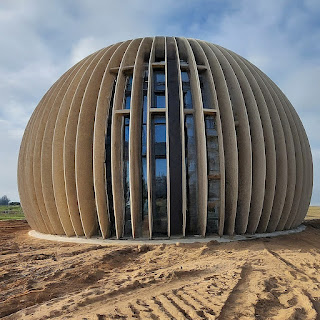Please visit my web page "Urban Tenets" at https://urbantenets.nl/
************************************************
A resilient transportation system is one–
a) that is made of entire low capacity to high capacity
public transportation system, and has such system under single apex governing
entity, for better control, cross-subsidisation, and better access to fund due
to critical mass (applicable in both mono and multi-stakeholder arrangement)
b) that includes even last mile connectivity in its project
scope, offering matching service experience (often excluded and usually only
limited to feasibility studies or sometime complemented with poor last mile
fleet services)
c) which still plans for future growth and expansion even
when battling with low ridership at any moment
d) mobilises sound instruments beyond transit
infrastructure, rolling stock and fleet, like TOD, value capture, rail and
metro station real estate lease, advertisement space lease, monetising
experience etc.
e) which forms partnership with other forms of complimentary
transportation service providers and competitions like app based cab service,
rideshare, micromobility services, bicycle rental; especially for seamless
connectivity, healthy mutually rewarding competition, and making use of
anonymised data for passenger flow modelling, network analysis and empirical predictions
f) which has opted for digitalisation of governance and
operations from customer centric services, to network management, to unified
cashless ticketing system, to fleet management and tracking, to predictive
maintenance, to fleet automation, to on-demand services
g) which focuses on customer service, customer acquisition
and customer retention in all separate target age, gender and ability groups
and creates channels to actively seek passenger and anonymous feedback
h) which has excellent online and offline information
dissemination and audio-visual display system and hence can devise flexible
network configuration and flexible coach configuration without disappointing
customers, required to respond to fluctuating demand, many a times experienced
due to seasonal and diurnal variation, route characteristics and force majeure
event; required to stay financially afloat (system that not just focuses on
expansion, but one that is able to sequester as well)
i) finally, public transportation system, which may consider
to experiment with real time flexible ticket pricing based of fleet occupancy
level using gamut of technological aids like sensors and analytical cameras.
Additional thoughts on real time pricing for public
transport system can be found in my other Linkedin article here
[https://lnkd.in/eaa28zat]
Author: Anoop Jha
************************************************
[Recent update
Starting 2024, launching urban management, interior design, home decor and commissioned artwork services in the Netherlands, serving local as well as international remote clients.
Please Note, that I am also conducting a FREE 45-minute online individual consultation on your interior design and home decor needs and aspirations if you are in the Netherlands or even internationally. Drop me an email at anoop.jha@gmail.com
Please visit my web page "Urban Tenets" at https://urbantenets.nl/
Instagram interior design page @urbantenets
Instagram fine art and illustration page @urbanoregional
My LinkedIn Profile: https://www.linkedin.com/in/anoopjha/
************************************************
#publictransport #metro #tram #bus #transitionpathways
#transportplanning #automation #technology #micromobility #bicycle #rideshare
#fleetmanagement #networkanalysis #ret #ns #urbanplanning #smartcity #Amsterdam
#Utretch #Hague #Delft #Denbosch #Alkmaar #Tilburg #Eindhoven #Rotterdam
#Netherlands

.jpg)
.jpg)



.jpg)







.jpg)

.jpg)


.jpg)

.jpg)
.jpg)
.jpg)
.jpg)
.jpg)